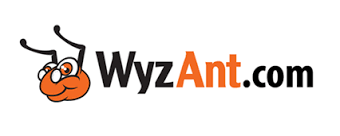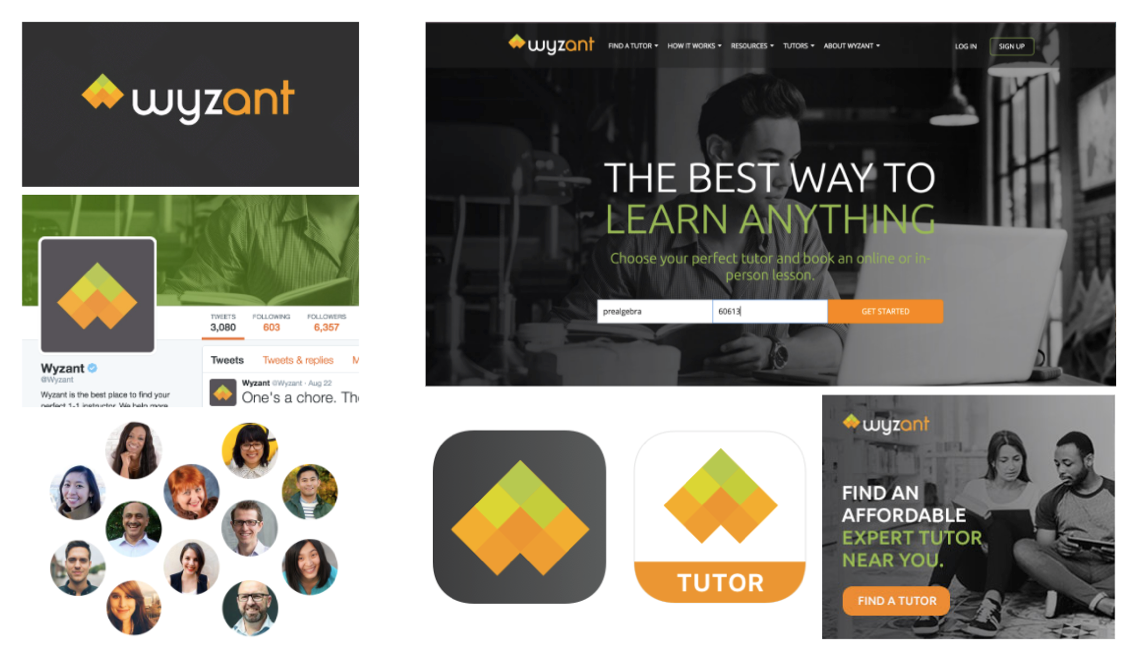How to Rebrand Your Startup
WyzAnt is one of Chicago's most successful startups, but they saw a need to update their brand. Here's How Abby Hunt did it.
Abby Hunt is Senior Director of Brand and Communications at WyzAnt, an online marketplace connecting tutors with students of all ages. Below is a transcript of her presentation from the November 11, 2016 Here’s How Startup Marketing Conference, where she shared her startup branding advice.
Hi, I'm Abby Hunt. I'm Senior Director of Brand and Communications at Wyzant. And before I even get into the brand, I do wanna make a quick caveat. This is our old logo, we just didn't wanna kinda give away the story at the end. A little bit about myself, though, so I've been at Wyzant since the beginning of the year. And the problem that we're actually going to be presenting is the reason why I went to this company.
So prior to that, I would say I'm a marketing storyteller, have been for about 10 to 12 years. And I spent four years prior to this leading communications and PR, and building a team over at Grubhub. So this was a challenge that actually brought me to a smaller company, because it's something I hadn't done before. So all these steps, things that I had to learn, but also I had a very well-known counterpart, his name is Rich McClellan, who is the Creative Director now at Wyzant, who also was at Grubhub.
So I'll explain the situation.
Wyzant is the nation's largest online marketplace for students looking for a private instructor. So two-sided: we have 80,000 instructors and then we have students on the other side. We conduct more than one million lessons throughout the year. However, the brand is not well-known. Some of the main reasons why, is it wasn't representative of our user base.
While Wyzant was originally founded to serve K-12 students, more than half of our base were college and adult students. It didn't necessarily represent our values. This didn't necessarily stand for anything. The "ant" has nothing to do with why the company was named that way. It was actually a merger of our founders last names, you have no idea what this is based on that. It also didn't represent the look and feel of the site, was not representative of the level of innovation that was going on within the company.
What was so great, is everybody who uses us, loves us, we have a great product. However, our brand was just not representing that. So we needed to re-evaluate how people thought about Wyzant, and the look and feel of the product, and the brand as well.
1. Refined long-term strategy
So the steps, this very nuanced, all these kind of jargon terms on here are things that you can Google, and you can find great examples of, so please do. However, the first thing that we really needed to do with the company, is refine the long-term strategy. We needed to make sure that people across the organization understood that we really wanted to focus on the opportunity with adult learners. These are non-traditional college students. These are people who are professionals, looking to maybe go back and learn how to code. So clearly, we needed to make sure everybody was on the same page, before we went down that path and established a brand identity.
2. Create robust user personas
This next part, I think, is one of the most important things that some companies kind of miss. And it really helps refine where you're going to go as a company, not just building the brand. User personas, this is marketing working with your product and tech team, to figure out who your current user base is and who you want it to be. It's creating personalities around people who you serve, this really helps direct the future of the brand. So you can have three personas, you can have five personas.
It's as simple as saying, for example, "I'm Abby. This person uses Wyzant because they are self-motivated. They wanna learn skills to get ahead." It's not just demographic and user research about how they're using your product, it's much broader. It's a story about who your users are.
3. Compare your brand to others in your industry
We then compared what Wyzant is offering versus the rest of the industry. Part of creating a well-known brand is creating one that's different from ones that are already out there. You look at any concentrated group in industry, so for example, when I was at Grubhub, a lot of these companies tend to brand themselves in very similar ways, use the same colors. How do you stand out against this? You want people to think of your company, so you can't have it look or sound or feel like anybody else.
These next two things I'm gonna talk about: Brand positioning, a brand promise, and a brand key.
4. Create brand positioning and promise
These are the things you can Google and figure out what they are, none of these are taglines. Before you even create a visual identity, you need to create a written identity of who you are as a company and what you stand for. A brand positioning statement is something that's really lofty, you're not gonna be there now, you're not going to be there next year, but you may be there in five years. This helps creates a framework for creating what you look and feel like as an organization.
So Wyzant when I got there was very functional, "We help you find a tutor." Well, our brand position, I'm pointing this out 'cause every word is actually very important, we figured out that it was, "Transforming individualized learning by inspiring people around the world to reach their potential". It's not a tagline and every word should take a lot of time getting to.
Your brand promise is what you are to your users. So our brand promise became, "Connecting students to instructors, who empower them to unlock their potential through individualized learning." They're very different.
5. Build a "Brand Key"
The brand key is actually a really important exercise that helps you determine what the current environment, the marketplace is that you're in. Who's your key audience? It's about eight or nine steps that helps you distill the essence of what the brand is in written form. These are all things that again, we then shared across the company. I think buy-in, as you're doing any of these steps with all your executives and your employees is really important. They also help you QA it. They're gonna tell you when something's BS, which is great to learn before you put all this time and money in things.
6. Explore a new visual identity
After we did all of these steps, one through five, which I would say took about a month and a half, two months, we started exploring a visual identity. All of these components were a framework for figuring out, "Okay, then, what do we stand for? What is the look and feel?"
7. Test, test, test... and test again
Once we had a bunch, I would say we went through maybe about 50 to 75 iterations of what a logo, and then built out a brand identity from there were, testing.
Send it to your user base. We sent it to tutors, to students. We also sent it to people who weren't Wyzant users, using things like Google Survey, purchasing lists from SurveyMonkey. Seeing what brand attributes for all these different ideas, these concepts, what did it end up being?
8. Present recommendations formally
We then ended up distilling down a list of five final options, because all the attributes that came back actually mapped up to our brand positioning, and our brand key. We then presented the recommendation; again, buy-in across your company. Everybody was extremely excited, from engineers to our customer support team, that's really important.
9. Prioritize the rollout
We then prioritized the rollout. When you've a brand and you have a tech product, you need to make that brand come to life across all your channels. The product stuff is really what takes time. You need to work with your product team to figure out what are the priority pages, the most everybody will see. You're not necessarily gonna re-brand your 404 page if it never gets used. So you don't do that.We actually needed to move fast and we wanted to get this out there pretty quickly.
We then also re-branded all of our primary communications channels. We rolled it out. This was towards the end of August. But the one thing that I really need to emphasize is a brand is a living thing. If you are not constantly iterating, testing... We used Optimize A2, I know a lot of people do, AB test things, things like landing pages, you need to look how every post on social is doing. So we're constantly doing that, we know that our brand is a living, breathing thing. We may have a 26-page brand guideline document, but this is something that we're constantly changing.
So the results... So we went from this:
to this:
This is Wyzant. It's connecting a world of learning. And so we created this entire identity, it's not just the visual stuff, it's the story-telling that goes behind it. Everything from our social channels, to how landing pages look, to the app icons, we had to create something that worked well on desktop and mobile, to what some of our acquisition ads would look like, to what the look and feel of the tutor profiles were on our page.
When it comes to measuring brand impact, you ask any brand marketer out there, it takes a while. It takes a long time to actually measure the impact. Some things that we were looking at initially were, how are conversions within the product? Honest, we just didn't want it to go down. So we knew it went up.
We also segmented it by demographics to see how was this actually resonating with adult learners. But we also didn't wanna alienate K12, and with the research that we did ahead of time, we were fairly confident that that was gonna happen and it did not. And actually our channels, any of our app on marketing channels, are doing much better, both within the K12 sector and the college and adults. So that's how we did it.









